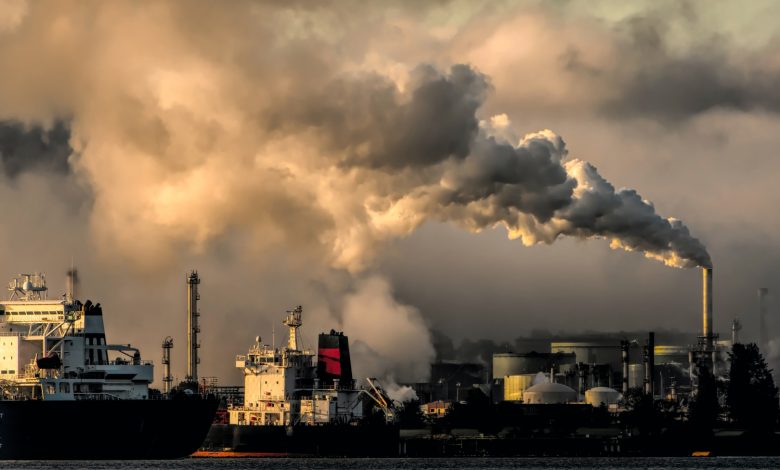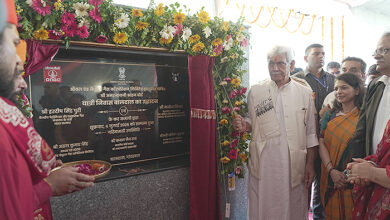One Percent Of International Development Funding And Two Percent Of International Public Climate Finance Was Committed For Air Pollution In Last Six Years
Air pollution causes 7 million premature deaths every year including more than half a million children under five

Over 99% of people around the world are breathing air that exceeds the WHO air quality guidelines, and air pollution causes 7 million premature deaths every year including more than half a million children under five. The diseases caused or exacerbated by air pollution – including heart disease, stroke, asthma, lung cancer, dementia and infections like pneumonia.
This suffering and expense could be avoided by clearing the air.Prevention is better than cure. The fifth edition of The State of Global Air Quality Funding report reveals, only 1% of international development funding ($17.3 billion) and 2% of international public climate finance ($11.6 billion) was expressly committed to targeting air pollution over the last six years for which full data is available. There are signs that the tide is starting to turn.
The State of Global Air Quality Funding 2023, produced by the Clean Air Fund in partnership with the Climate Policy Initiative, provides a snapshot of outdoor air quality funding between 2015 and 2021 and highlights opportunities for international development funders to do more. This year for the first time, the reports showcase a range of innovative financial instruments that – if harnessed – have the potential to mobilise additional private capital and, ultimately, accelerate action on clean air.
Key findings include :
- Chronic underfunding persists: Just 1% of all international development funding (or $17.3 billion) was expressly committed to targeting outdoor air pollution between 2015 and 2021. Only 2% of international public climate finance ($11.6 billion) went towards tackling air pollution in that same period.
- Notable funding gaps exist: The majority (86%) of outdoor air quality funding ($12 billion) was concentrated in five Asian countries. Meanwhile, Africa received only 5% (or $0.76 billion) of all air quality funding between 2017-2021, despite being home to some of the world’s most polluted countries.
- Early signs of a positive shift: International development funding for clean air projects has, for the first time, exceeded funding for fossil fuel-prolonging projects. The analysis shows that, in 2021, an estimated $2.3 billion was spent on tackling outdoor air pollution in low- and middle-income countries. In comparison, $1.5 billion was channelled into fossil fuel projects, such as oil and gas extraction and production.
The data shows a decline in funding for fossil fuel-prolonging projects since 2019. At its peak that year, some $11.9 billion of international development funding was channelled towards fossil fuel projects, threatening both the clean air cause and the delivery of global climate goals. In 2021, for the first time, international development funding for outdoor air quality projects ($2.3 billion) exceeded funding for fossil fuel-prolonging projects ($1.5 billion).
This fifth edition of The State of Global Air Quality Funding report provides a snapshot of the outdoor air quality funding landscape between 2015 and 2021. It identifies funding gapsand opportunities, compares funding to address outdoor air pollution with international fossil fuel financing, and outlines the synergies between tackling air pollution and climate change. For the first time, it also explores a range of financial instruments available to funders – but not yet harnessed – which have the potential to incentivise and facilitate more funding towards air quality projects.
This growing momentum follows the commitment to phase-down coal-fired power at COP26, among other forums. If this trend is to continue downwards, governments at COP28 need to agree on clear strategies for phasing-out fossil fuels completely and transitioning to cleaner energy sources fairly and equitably. There are several important funding opportunities that donors should be tapping into.
Among other gaps, African countries are being left behind and receive only 5% (or $0.76 billion) of all outdoor air quality funding between 2017 and 2021 despite the continent being home to half of the world’s top ten countries with the highest level of air pollution. There are gaps at a city-level too. Accra and Jakarta, for example, are well placed to lead the charge if further climate finance could be mobilised. At a project level, more funding is needed for air quality modelling, measuring and monitoring, which could create greater efficiencies due to better targeting of air quality action, and shore up the public support and political commitment that are necessary for action.
In addition to the direct health impacts of dirty air on the lungs, hearts and brains , we are increasingly suffering the health impacts of a deteriorating climate. The two issues are of course entangled. The same toxic emissions that heat our planet also toxify the air we breathe.
Climate change is causing extreme weather and fuelling wildfires which further pollute the air and exacerbate the warming of our planet… The worst impacts of air pollution are being felt by the poorest communities, The State of Global Air Quality Funding series maps the outdoor air quality funding landscape, presents major trends in international development finance flows and identifies how — and where — donors can maximise their resources. This analysis helps to build transparency and provides an evidence base for policy makers, funders and campaigners. The goal is to accelerate progress on clean air and arrest the damage that toxic air inflicts on our health, climate and economy. By investing in clean air, donors can save lives.
RECOMMENDATIONS FOR FUNDERS
We recommend a substantial increase in the volume of funding for air quality from OECD-DAC donors, whether channelled through multilateral channels or bilaterally. The report urges funders to better incorporate air quality co-benefits into climate and health projects. Priority should be given to increasing grant and concessional finance and to ensuring that funding reaches all countries and regions in need. This is particularly important in the context of the debt distress faced by so many countries that receive international aid.
As the largest funders of outdoor air quality projects, Multilateral Development Banks can play a critical role in substantially increasing the availability of development finance for air quality. There is a particular role in driving this agenda for the World Bank,whose new leader, Ajay Banga, has made access to clean air an explicit part of its remit.
National policy makers and regulators are encouraged to track and report on government spending on air quality to increase transparency and assess progress over time. This includes capital mobilised from other sources for projects with air quality co-benefits. For example, private capital could be attracted at scale through innovative financial vehicles such as Shari’ah-compliant bonds or sukuks and structured finance mechanisms such as securitization.
Ultimately, funders and policy makers need to rewrite the script. They must reassess how they finance climate and air quality projects in tandem if we are to live up to the hopes of the Paris Agreement and Sustainable Development Goals. Only then will we see the funding scale up to match both the size of the opportunity and the
scale of this pervasive, global problem.
WHY DOES FUNDING AIR QUALITY WORK MATTER
Funding for projects that improve outdoor air quality has the potential to shift the dial globally on human health, climate mitigation and adaptation, and economic development. By investing in clean air projects, funders can more effectively utilize their resources, delivering smart interventions that help deliver multiple Sustainable Development Goals (SDGs) all at once. Despite these many benefits, and an incredible return of $30 on every $1 invested, air quality remains overlooked by too many international donors.
The writer of this article is Dr. Seema Javed, an environmentalist & a communications professional in the field of climate and energy




